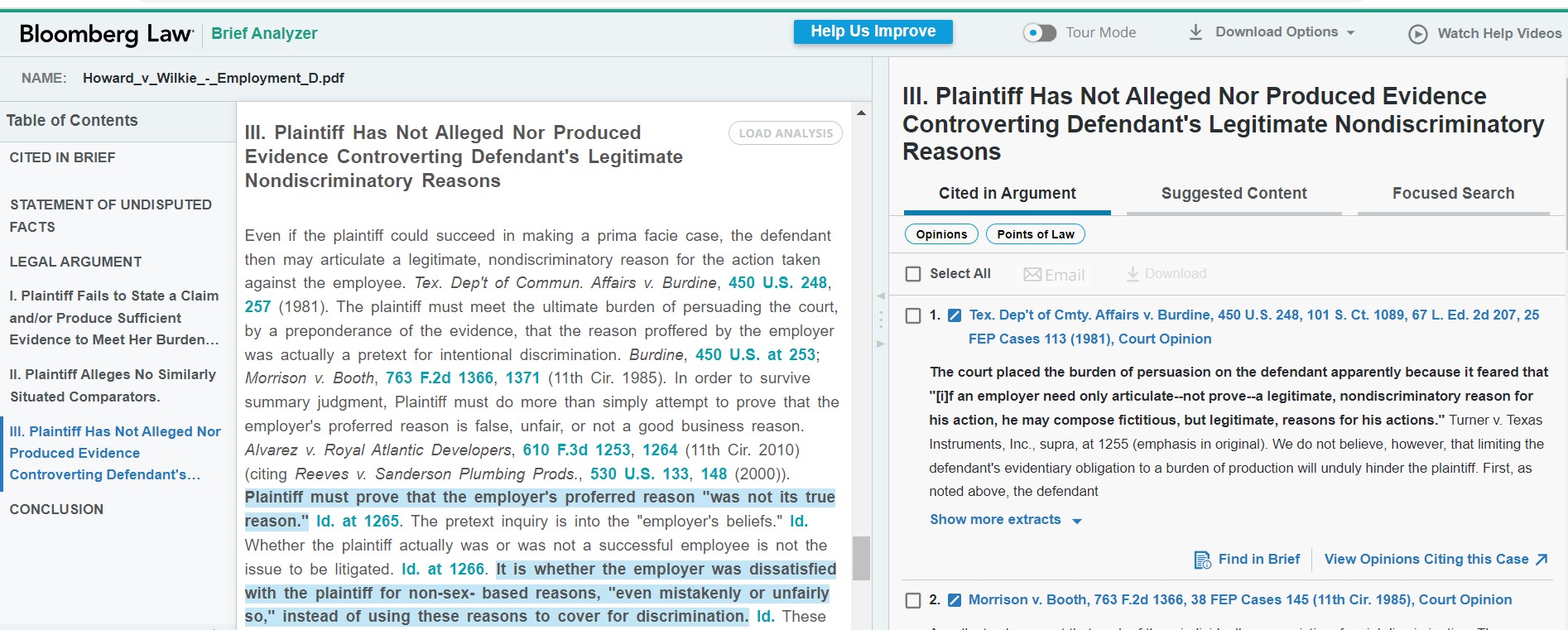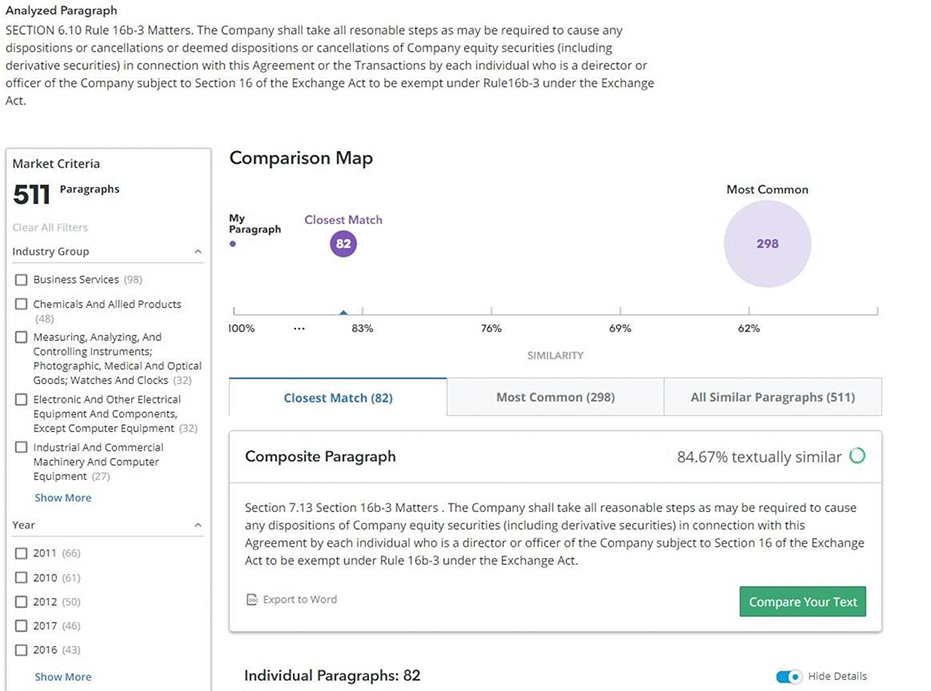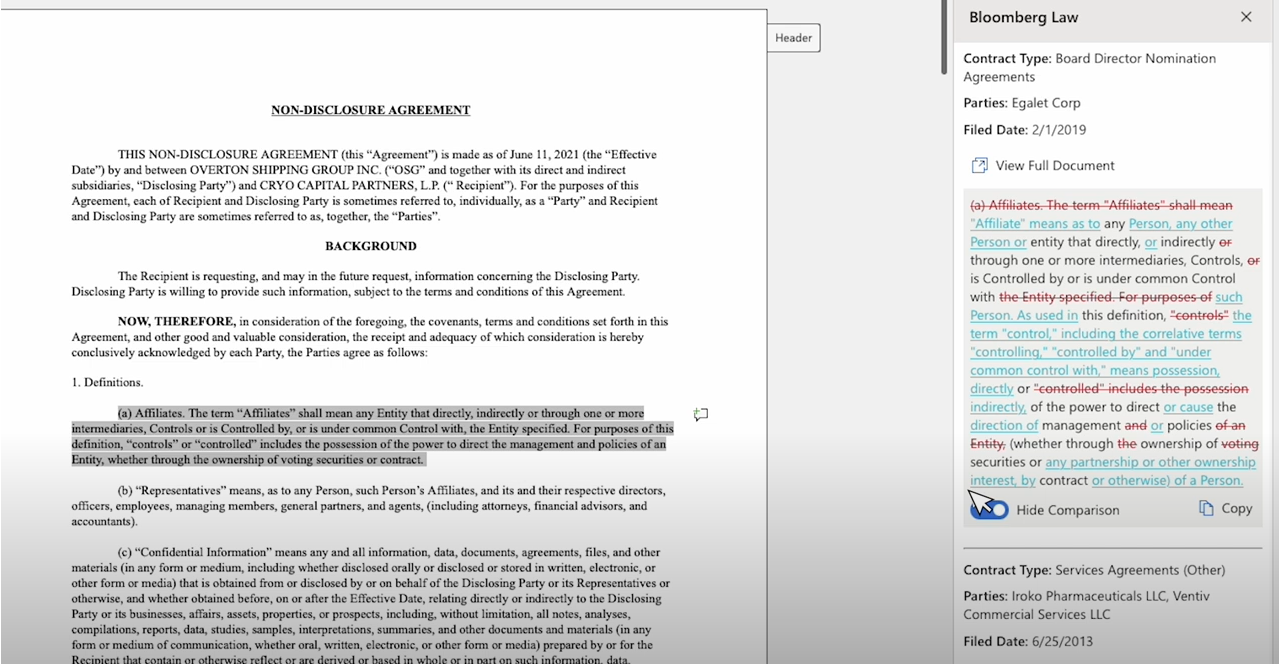Artificial Intelligence for Lawyers Explained
[Learn more about how Bloomberg Law uses AI technology to accelerate research, streamline contract drafting, and analyze briefs.]
Incorporating artificial intelligence technology into legal practice is no longer a buzzy new frontier. It’s become accessible in our day-to-day lives – and, more importantly, clients have come to expect it from the firms they employ.
When properly deployed and understood, AI can help lawyers make informed, data-driven decisions and improve their efficiency. Here, we help you understand how it works by taking a closer look at the jargon and varying definitions of AI that have permeated the legal industry.
What is artificial intelligence?
In its simplest form, AI is the overarching description for technologies that use computers and software to create intelligent, humanlike behavior. If you have ever used Siri or Alexa, or conducted a Google search, you have used AI. If you have ever received recommendations for products or services based on past purchasing or browsing history, you have used AI.
What is generative AI?
With the release in late 2022 of ChatGPT, a sophisticated chatbot from artificial intelligence research nonprofit OpenAI, focus has turned to generative AI and large language models.
A generative AI tool generates “output,” typically in response to instructions from a user, referred to as the “input” or “prompt.” The output is based on an algorithmic model that has been trained on vast amounts of data – which could be text, images, music, computer code, or virtually any other type of content.
What makes generative AI different from more familiar algorithm-based machine learning (ML) technology is that it draws on enormous sources to almost instantaneously create seemingly new, task-appropriate rich content: essays, blog posts, poetry, designs, images, videos, and software code.
How is machine learning different from artificial intelligence?
By definition, machine learning is a process whereby computer systems improve their performance of specific tasks over time. The distinction between artificial intelligence and machine learning is a subject of debate among computer scientists, but for purposes of their application in legal work, AI and ML are more or less interchangeable terms, with machine learning being more accurately descriptive of systems and processes currently in use.
In the legal context, computers and software frequently employ AI in the form of machine learning that facilitates the automation of legal work.
There are three types of machine learning:
-
- Supervised machine learning: a subset of AI in which computers seek and recognize patterns within predefined data sets. These data sets are typically created by human domain experts who act as guidance counselors of sorts to the machines.
- Unsupervised machine learning: creates data sets without known outputs or predefined data. For these applications, there is no expert-created data set acting as guidance for the tool’s behavior. The software, in essence, learns and adapts to the data on its own.
- Reinforcement learning: a type of machine learning that “rewards” the computer to create correlations.
The value in AI is the ability to analyze massive amounts of data and unearth details that are undetectable to the human eye. Yet without human expertise ensuring the quality and accuracy of that data, AI can do more harm than good.
For lawyers, the most successful uses of AI involve both technology and human expertise. That is where machine learning – specifically, supervised machine learning – comes in.
While in many cases unsupervised learning can uncover new and interesting insights, the lack of guidance and structure can also result in inaccurate findings. Because they practice in a field that places utmost importance on accuracy, lawyers should be cautious when relying on tools that employ purely unsupervised learning techniques.
For lawyers, supervised machine learning offers the best of both worlds: faster research than ever, with less risk of inaccuracies or missing documents. The result is nearly instant access to data and insights that can give lawyers a leg up on their competition.
What is the role of AI in legal research?
In today’s legal world, the worry of not finding the right information is exacerbated by the insurmountable amount of online legal information – court opinions, agency materials, statutes, regulations, books, practice guides, law reviews, legal white papers, news – the list goes on and on. Information overload has resulted in a lack of confidence in the legal research process, often leaving attorneys unsure of whether they have found the right information, which makes the application of artificial intelligence all the more important.
By using tools that employ advanced AI techniques, attorneys can gather insights from large sets of data and focus on the information that matters most, enabling them to be more efficient and more strategic, and offer more value to their clients.
Although many attorneys may never feel completely confident in their research, they can sleep easier knowing that their research tools are employing technologies such as natural language processing and machine learning to help them find that needle in the haystack they are looking for.
As an example, Bloomberg Law’s Brief Analyzer employs machine learning to streamline and reduce the steps in traditional brief analysis. The Brief Analyzer tool identifies and evaluates legal authorities cited in the brief, suggests relevant content with detailed explanations for the suggestions, and cross-references and links to related resources such as similar briefs and Practical Guidance.

Brief Analyzer displays the legal brief and related content in an easy-to-review, side-by-side format.
Bloomberg Law’s Points of Law feature demonstrates how supervised machine learning can enhance a lawyer’s efficiency. Guided by learnings from human-created data sets, Points of Law extracts all of the important and relevant legal principles contained in court opinions. This helps legal researchers unearth new relevant documents and more easily identify similarities among court opinions.
Covering millions of court opinions, this application of AI can minimize the number of errors in the research process and help an attorney avoid missing important, relevant documents. Now the extra time previously spent on research, or on outsourcing research, can be better applied to reviewing and acting upon relevant documents and engaging in more strategic work.
Searching docket filings is another time-consuming, tedious task that AI can expedite. Docket Key, Bloomberg Law’s proprietary docket filing classification system, uses AI models to identify and search for up to 20 key document types across all federal district court dockets, allowing users to search for the precise type of filing they need (e.g., brief, motion, etc.)
Our Docket Resolution classification system helps attorneys quickly obtain the ultimate outcome for closed federal district court dockets. Upon detecting that a case has been marked closed, a deep learning model reads over the entries of federal district court civil dockets and, from the data presented on the docket sheet, assigns each case one of seven categories of outcomes.
In addition to the outcome, when a settlement has been noted in a docket sheet, a notice is published that a settlement has been detected in the case.
[Learn more about how Bloomberg Law uses AI technology to accelerate research, streamline contract drafting, and analyze briefs.]
How can AI tools be used in transactional law?
Utilizing a powerful language model could empower lawyers to automate essential but tedious contract-related functions, allowing attorneys to spend their valuable time strategizing and negotiating rather than drafting.
Bloomberg Law’s Draft Analyzer uses several machine learning models to identify how draft language may deviate from the market standard and to help attorneys answer the question of what language their counterparty usually agrees to.
A machine learning model detects clauses and builds a clause outline. A semantic analysis engine then allows the Draft Analyzer tool to compare, for example, the language of a draft to tens of thousands of publicly filed M&A agreements and identifies any text with a similar meaning. Numerous filtering options automatically adjust the results, allowing you to focus on the language most relevant to your agreement or transaction.
Bloomberg Law Contract Solutions is an AI-powered solution for storing, searching, drafting, and negotiating contracts. It employs AI technology built into an MS Word add-in which is trained on large numbers of contracts to analyze and compare draft clauses against your organization’s past agreements and the EDGAR database.
Contract Solutions also uses AI to quickly and easily analyze every contract to identify the defined terms, highlight them, and find the definition for each. It also displays potential issues and errors to ensure no mistakes were made which could cause ambiguity or confusion.
What are the ethical risks of using AI in legal work?
When looking for guidance on when and how to use AI in legal work, attorneys can reference several of the ABA’s Model Rules of Professional Conduct, though they should also consult state rules for any variations. The ABA’s rules are written so they can be applied in various situations as technology develops, rather than being specific about an individual technology.
Several ABA model rules are applicable when working with AI, including 1.1 Competence and 1.6 Confidentiality of Information. In a more general sense, the ABA opinions on outsourcing can also apply to the use of artificial intelligence.
1.1 Competence
While the competence rule states that a lawyer should provide competent representation to their client, comment 8 specifically addresses technology. It says, in part, “a lawyer should keep abreast of changes in the law and its practice, including the benefits and risks associated with relevant technology.”
Some states, such as Florida, have taken this rule a step further to state that if a lawyer doesn’t understand a certain technology, they should seek out a nonlawyer or someone with relevant expertise to help.
In terms of generative AI, users must understand both the input and the output of the service and have reasonable expectations regarding accuracy. It’s important to recognize that generative AI is only as good as the data it’s given, so if the data includes errors or biases, the results can reflect that.
1.6 Confidentiality of Information
The confidentiality rule requires that lawyers take reasonable steps to protect client information from unintended recipients. This relates to technology use and, in particular, how information is transmitted, stored, and destroyed. It’s critical for lawyers to check the terms of use for any AI application they use and understand how any information they input is stored or shared with third parties. Here, the rules on outsourcing can come into play since the majority of AI tools being used by lawyers are developed and operated by external vendors.
[Watch Bloomberg Law’s Ethics CLE-eligible webinar Generative AI & Legal Ethics: The Intersection of Efficiency and Ethical Discord for more on balancing the benefits and risks of using AI.]

